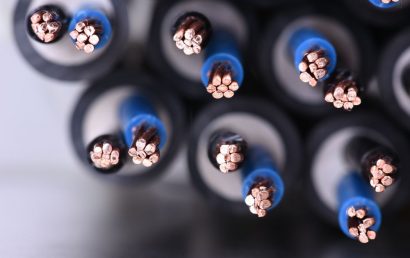The Basics Of Cathodic Delamination
Non-conductive coatings are often used for electrical insulation coating where certain industries like airlines may require it. The benefit of non-conductive coatings is that they prevent cathodic delamination. At A&A Coating, we have an experienced team of non-conductive coating (NCC) personnel with other thermal coatings to offer as well to ensure that you can find the best non-conductive coating for your industry. We also highlight the basics of cathodic delamination as it causes polymer-metal bonding failure, affecting your equipment’s function.
What Is Cathodic Delamination?
Cathodic delamination is a reaction involving corrosion that happens spontaneously in seawater. It happens on cathodically polarized surfaces that are typically metal in nature though there are exceptions to that. Cathodic delamination produces a high pH environment, meaning it’s highly alkaline, between the material directly above and the cathodically polarized surface. Alkaline conditions indirectly or directly result in the overlying material to delaminate from the cathodically polarized substrate.
Cathodic delamination is the cause of the bonding failure between polymer and metals, especially in a marine environment. The sacrificial zinc anodes on the hull will cause the metal surface to polarize cathodically. This generates caustic hydroxide ions on the metal surface, which destroys or weakens the metal-polymer bonds and causes delamination.
Cathodic Delamination Process
The process of cathodic delamination is fairly simple. When the polymer is saturated with water and dissolved oxygen, this results in the formation of hydroxide ions at the metal and polymer interface. This hydroxide ion formation is due to cathodic corrosion reaction. With these hydroxide ions being formed, there is a built up of osmotic pressure that results in high-pressure water “blisters” to form at the bond line. However, what governs the blister growth is the permeability of the polymer.
Conditions For Cathodic Delamination Alternative Life Testing (ALT)
Alternative life testing (ALT) is a test to show how long a given connector or cable can function in an marine environment, such as under the sea. Hence, alternative life testing is done to test how cathodic delamination actually happens. This is because accelerated life testing expedites the aging process to analyze the service life of the cable or connector. This is true when a sacrificial zinc anode is utilized. In the event a battery is used, a reference electrode must be utilized. This ensures the polarization is correct and it factors the zinc electrode’s “throw weight” in the set up. Hence, current density and voltages must be correct for cathodic delamination ALT to happen. There will be undesired reactions if the voltage is not correct. However, if the current density is not correct, it will either decelerate or accelerate the reaction and compromise on a temperature-based ALT.
Consequences Of Cathodic Delamination
When cathodic delamination happens, there will be blistered primers and paints where it will look like it’s coming off. There will also be delaminated polymer over-molds as well. It will affect the functioning of your cables and connectors in marine environments.
Why Choose Us?
At A&A Coatings, our coatings prevent cathodic delamination from happening. Hence, there will not be polyurethane over-molding at the connector metal plug body and allow water to enter in. Contact us to find out more about our non-conductive coatings!



